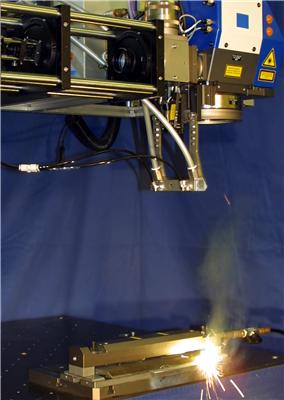Mar 10 2009
Car doors are usually assembled from several sections of sheet metal which are welded together by laser. The laser beam moves over the slightly overlapping sheets and melts them in a spot measuring several tenths of a millimeter, producing a so called full penetration hole that closes again when the laser beam moves on.
 Instant control for laser welding
Instant control for laser welding
It is most important for the laser output power to be set correctly – if it is too low the strength of the welding connection is reduced because it does not extend over the full cross section of the metal sheets, if it is too high the laser cuts right through them. Until now welders have gauged the right laser output by trial and error and then kept it constant. A complicating factor exists, however, in that the protective glass gets dirty after a while and lets less laser light through onto the metal. If this happens earlier than usual, hours can pass before it is noticed and the metal sheets may not be properly welded.
Today, welding processes are only monitored without adjustment of the laser power because the achievalble frame rate of about thousand evaluated images per second is not sufficient. For a closed loop control, frame rates of more than 10 kilohertz – equivalent to 10,000 images per second – are needed for a robust surveillance of the rapidly moving full penetration hole.
Researchers at the Fraunhofer Institute for Physical Measurement Techniques IPM in Freiburg have now developed a control system for laser welding processes which adapts the output to the given situation. “Our system analyzes 14,000 images per second and uses the acquired data to adjust the laser output,” explains IPM project manager Andreas Blug. So how does the system manage to analyze the images more than ten times faster than conventional software? “We use special cameras in which a tiny processor is integrated in each pixel. All these processors – 25,000 in total – work simultaneously. In conventional image processing systems the data are handled consecutively by just a small number of computer processors,” says Blug.
The new systems are referred to as “Cellular Neural Networks” (CNN). Just a few microseconds after the image is taken the camera delivers an analyzed picture of the contours of the full penetration hole. For small holes the system increases the output, for large ones it reduces it. “In developing this adjustment system we have achieved the first industrial application of CNN technology,” says Blug. A prototype already exists, and the researchers now intend to test the system in production.